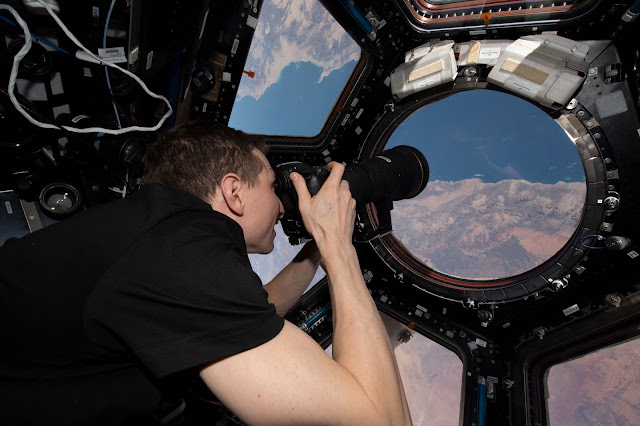Icy Cliffs at the Martian North Pole | NASA's Mars Reconnaissance Orbiter
An ice cap about three kilometers (two miles) thick exists at the North Pole of Mars. In some locations its edge is a cliff about 800 meters (half a mile) high that is an almost-vertical wall of ice. With HiRISE images like this one we can look at this cliff face and see it is broken up into jagged blocks. Debris piles at the base of the cliff show where these blocks have fallen out. In the spring, we also sometimes see avalanches pouring down these cliff faces and this image was taken to search for more of them. No avalanches are visible this time, however. For reasons we do not understand, the number of avalanches varies from year to year and this spring appears to be a low-avalanche year.
This image was acquired on Febuary 15, 2023 by NASA's Mars Reconnaissance Orbiter (MRO) shows a cliff face broken up into jagged blocks. Debris piles at the base of the cliff show where these blocks have fallen out.
The University of Arizona, Tucson, operates the High Resolution Imaging Science Experiment (HiRISE) instrument, which was built by Ball Aerospace & Technologies Corp., Boulder, Colorado.
NASA's Jet Propulsion Laboratory, a division of Caltech in Pasadena, California, manages the Mars Reconnaissance Orbiter Project for NASA's Science Mission Directorate, Washington.
“For 17 years, MRO has been revealing Mars to us as no one had seen it before,” said the mission’s project scientist, Rich Zurek of JPL.
Credit: NASA/JPL-Caltech/University of Arizona
Image Date: Febuary 15, 2023
Release Date: May 12, 2023
#NASA #Space #Astronomy #Mars #Planet #RedPlanet #Science #Geology #Landscape #Terrain #Geoscience #NorthPole #IceCap #Cliffs #Ice #MRO #Orbiter #Spacecraft #HiRISE #Camera #JPL #Caltech #UniversityOfArizona #BallAerospace #STEM #Education
.jpg)























.png)
%20Chandra-JWST%20(05-23-23)Large.jpg)
Large.jpg)